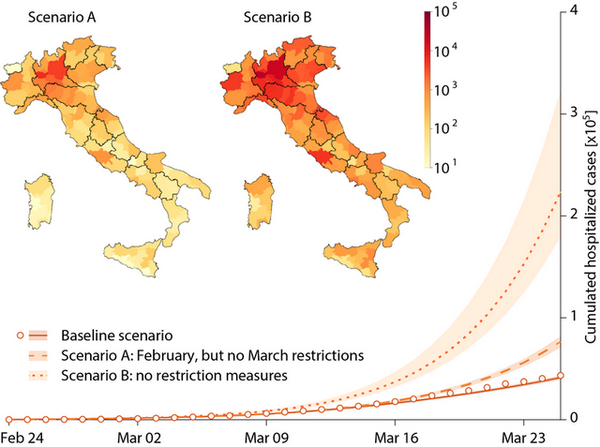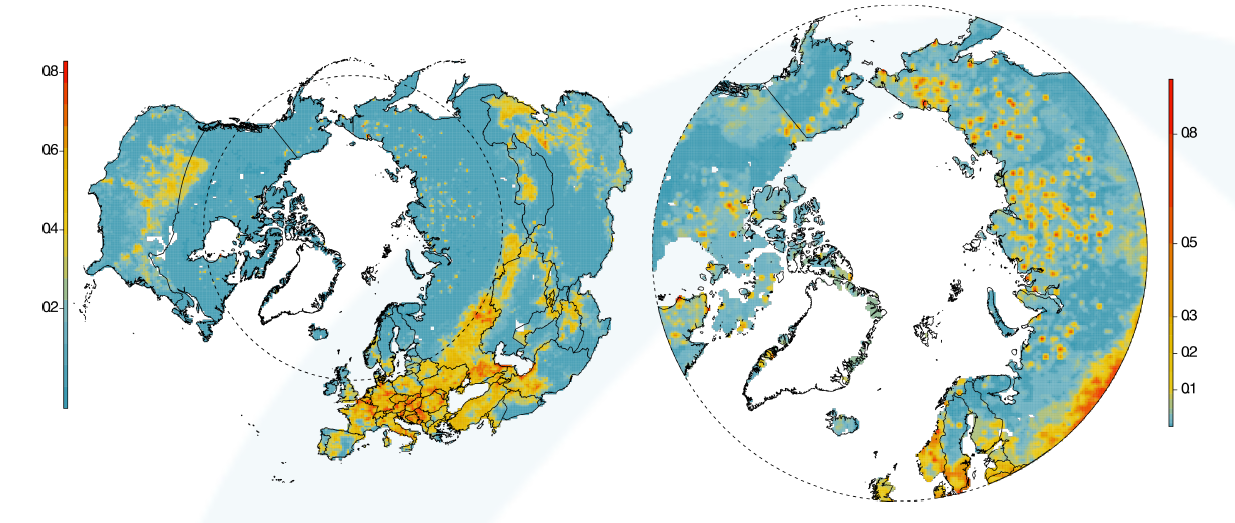The ongoing pandemic challenges global societies. Nunataryuk scientists of the University of Venice (UNIVE) have been analysing and modelling the COVID-19 outbreak and spreading trends in Italy amongst scientists belonging to Politecnico di Milano, Università Ca’ Foscari Venezia, University of Zurich, EPFL Lausanne, and Università di Padova.
It is the first spatial model about COVID-19 spread in Italy, taking into account not only time evolution of the infection in local communities, but also their geographical distribution as well as including the mobility of individuals (to and from work and study places). Based on mobile phones geolocalization from an independent study, the researchers were able to estimate reduction in mobility due to the implemented restrictions and compare that the pre-pandemic mobility.

Modelling the disease spread can include details of interventions at the proper geographical scale. Based on them, it is possible to quantify the effect of local containment measures (like diachronic spatial maps of averted hospitalizations) and the assessment of the spatial and temporal planning of the needs of emergency measures and medical infrastructure as a major contingency planning aid. The study shows, how mobility restrictions implemented by the Italian government have avoided at least 200,000 hospitalizations and reduced the contagion transmission by 45%.
What makes this study both important and unique is its spatial resolution: the disease-spread geography is modelled in 107 provinces and metropolitan areas – the most granular level of detail available. Since the model turns out to be quite accurate, it could therefore be used to provide scenarios regarding future governmental measures.
The scientists at UNIVE used similar epidemiological models for a study within Nunataryuk to predict anthrax disease in Arctic regions. Anthrax generally occurs in nature as a global zoonotic and epizootic disease caused by the spore-forming bacterium Bacillus anthracis. It principally affects herbivores and induces high mortality among livestock, entailing significant sanitary and economic consequences. The study “Permafrost dynamics and the risk of anthrax transmission: A modelling study” by Stella et al.(submitted) finds, that thawing permafrost poses a significant threat, because of the potential re-emergence of pathogens, chiefly among which anthrax, which may pose serious risks for local communities and their sustenance. We clearly see that spread areas within northern latitudes are clearly potentially suitable for anthrax diffusion (right dashed circle). In general, it can be noted that areas potentially at risk follow the spatial distribution of reindeer presence, confirming the importance of this variable in determining anthrax diffusion.

If you want to learn more about the COVID-19 model:
“Since the beginning of the epidemic until March 25, the mobility restrictions implemented by the Italian government have avoided at least 200,000 hospitalizations and reduced the contagion transmission by 45% according to a study accepted for publication in the renowned journal PNAS“
https://www.unive.it/pag/16584/?tx_news_pi1%5Bnews%5D=8839&cHash=15beb72fb0a702bd1a508b31d5f45117
https://news.epfl.ch/news/containment-measures-avoid-200000-hospitalizations/


